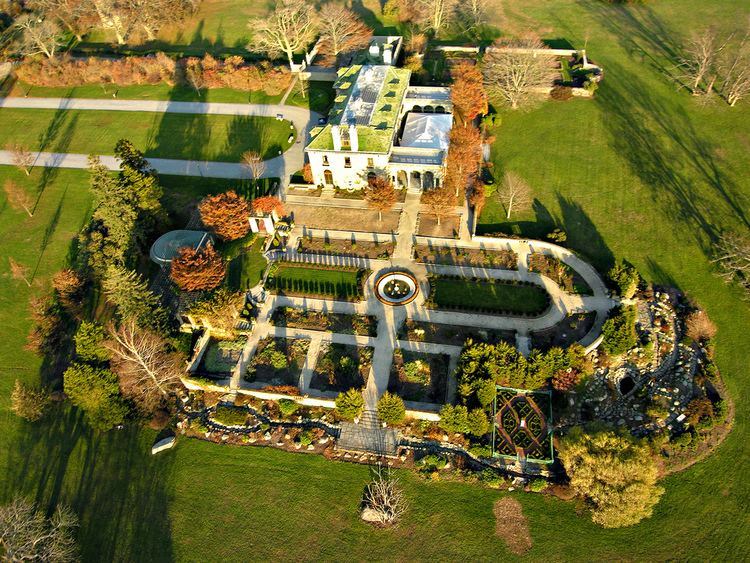Built 1906-1907 Area 89 ha Added to NRHP 20 November 1986 | NRHP Reference # 86003331 Phone +1 860-443-5725 Architect Austin W. Lord | |
 | ||
Architectural style Late 19th and 20th Century Revivals, Second Renaissance Revival Address Great Neck Rd, Waterford, CT 06385, USA Hours Open today · 8AM–8:30PMThursday8AM–8:30PMFriday8AM–8:30PMSaturday8AM–8:30PMSunday8AM–8:30PMMonday8AM–8:30PMTuesday8AM–8:30PMWednesday8AM–8:30PM Similar Rocky Neck State Park, Bluff Point State Park, Fort Trumbull, Gillette Castle State Park, Devil's Hopyard State Park | ||
Harkness memorial state park ct
Harkness Memorial State Park is a 230-acre (93 ha) Connecticut state park and botanical garden located on Long Island Sound in the town of Waterford, Connecticut. The state park comprises Eolia, a 42-room Renaissance Revival mansion with formal gardens and greenhouses.
Contents
HistoryEdit
The park was the former summer home of philanthropists Edward and Mary Harkness, who inherited the fortune created by Edward's father, Stephen V. Harkness, who was a substantial investor in John D. Rockefeller's Standard Oil. The mansion was designed by the New York architectural firm of Lord & Hewlett and constructed in 1906-1907. From 1918 to 1929, landscape designer Beatrix Jones Farrand made extensive improvements to the grounds, adding numerous formal gardens. The estate was left to the state by Mary Harkness in 1950 and became part of the state park system in 1952. Eolia—The Harkness Estate was listed on the National Register of Historic Places in 1986 as a 220-acre (89 ha) historic district with 15 contributing buildings and two other contributing structures.
Activities and amenitiesEdit
The park offers mansion tours, picnicking, and shoreline fishing.
